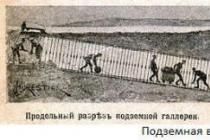Linoleum is a fairly widely used material for flooring, its main advantage is its low price. But the low price automatically indicates that the quality of the material does not quite meet modern requirements. One of the problematic characteristics is that harmful chemical compounds can be released during operation. You need to pay attention to this criterion when choosing a specific linoleum for underfloor heating.
Linoleum can be:
- PVC-based... One of the cheapest options, it has limitations on maximum heating. Most species must not be heated to temperatures above + 28 ° C. For underfloor heating, you need to apply very carefully and constantly monitor the heating mode;
- Glyphtal. The surface is coated with a highly durable glyphtal varnish. In terms of operational characteristics, it meets modern requirements. It is considered the best option for arranging underfloor heating. The disadvantage is the relatively high price;
- Rubber. The cheapest, rarely used in residential premises due to unsatisfactory quality indicators. Allowed for use during the arrangement of warm floors;
- Single layer. Thin material, very cheap and very fragile, used in dirty places, requires frequent replacement. It is laid without joints, the overlap places are welded with special equipment;
- Insulated linoleums... A complex, thick and expensive material with low values of the thermal conductivity coefficient. It is not recommended to use for warm floors, it reduces the efficiency of the heating system.
It is necessary to pay attention to one more characteristic of linoleum - the presence or absence of a bedding layer of fabrics. If there is such a layer, then the thermal conductivity indicators are significantly reduced, it is undesirable to use material for arranging a film warm floor.
After the type of linoleum has been chosen, you can start the process of laying the warm floor. To do this, you will need a thermal film (a specific amount will be known after removing the dimensions) with all additional elements, a thermostat to control heating modes, any heat-reflecting material, ordinary plastic film, adhesive tape, a stapler, an assembly knife, scissors, pliers and a screwdriver.
Step 1. Preparation of the base. If the floor is placed on concrete floors, then the plane must be leveled. To do this, it is better to make the screed with a cement-sand mortar; there should not be protrusions of more than 3 mm on the surface.
Waterproofing should be placed on a completely dry screed (you can use an ordinary film or smear the base with modified bituminous mastics), sheets of OSB or plywood are laid on top. It is recommended to fasten to a concrete base with dowels in a checkerboard pattern.
Step 2. Take measurements and draw up a layout for the thermal film. In this case, the features of the layout of the room, the placement of sockets or electrical cabling boxes are taken into account.
Important. During the installation of a warm floor, the possibilities of wiring the room must be taken into account. Underfloor heating consumes approximately 200 watts per square meter of room, for exact data refer to the manufacturer's instructions. The total load on electrical networks increases significantly, you need to make sure that the cables and protection fittings can withstand this increase. If the heating power is more than 3 kW, then you need to make a separate power wiring.
If not, then you will have to resolve issues with electricians, sometimes it will be necessary to replace wiring and protective devices, permit the owners of electrical networks to increase power.
Step 3. Choose a place on the wall where you plan to install the thermostat. It must be accessible, the distance to the power source is minimum. The most optimal site is considered to be near existing switches or sockets.
To improve thermal insulation and reduce unproductive losses, a thermal insulator with reflective aluminum foil is placed on the base of the floor under the thermal film.
Laying foil insulation
The thickness is in the range of 5–6 mm; there are ready-made rolls with excellent operational characteristics. The thermal insulator can be fixed with double-sided tape or staples using a stapler. The joints between the strips must be sealed with tape, the surface should be as tight as possible.
Step 4. Put on the thermal film, while paying attention to the markings, the lower side should face the heat-reflecting film.
Practical advice. It is recommended not to do heating under low furniture for two reasons. First, it is ineffective due to weak air convection. Secondly, high temperatures cause premature wear of furniture, it dries up, factory adjustments are violated.
In the indicated places, the thermal film is cut to the required size.
Step 5. Connection and isolation. All work should be performed with unconditional compliance with the requirements of the PUE and the manufacturer's recommendations. The warm floor is completed with a full set of connectors and special insulating materials, their use guarantees long-term and safe operation of the structure. The cut points of the wide copper bus are insulated with special bitumen insulation, make sure that it adjoins over the entire area of the conductive element. In the places of the future connection of wires to the copper bus, contact clamps are installed, one side of them should be located inside, and the other outside of the thermal film. The clamps are pressed tightly with pliers.
Contact clip installed on the thermal film (bottom view)
Step 6. All strips of thermal film should be fixed with adhesive tape to eliminate the possibility of shear. Next, the correct installation of the clamps and the film is checked, if everything is normal, then you can connect the power wires.
Connection of field wires with a terminal clip Connection of field wires with a terminal clip
To increase the service life, it is advisable to tin the bare ends. This not only improves contact at the joints and prevents oxidation processes, but also increases the safety of using the warm floor. If there is insufficient contact, the clamps become very hot and can melt the linoleum. Possible burns to feet, electric shock or fire. All clamps with connected wires must be insulated with a special bitumen film on both sides. Make sure that the silver contacts of the thermal film are completely insulated from the top and bottom.
Step 7. You can start connecting the thermostat only after carefully reading the attached instructions. The heating temperature sensor is mounted on a black strip of thermal film, fixed with an insulating tape. There are cases when it is installed above the floor and reacts to the indoor air temperature.
Step 8. For all the clamps and the sensor with a mounting knife, you need to make recesses in the thermal insulation. The protruding parts of the elements will hide in these recesses, the floor will be flat, there will be no technological elevations on the linoleum. The same grooves are made under the wires so that they lie in the established places and are fixed on top with adhesive tape.
Step 9. Install the thermostat on the wall. To do this, you need to remove the mounting panel, make markings for the installation locations of the dowels. The holes are drilled with a hardfaced drill. The body must be firmly fixed, do not wobble.
Installing a thermostat
Video - How to connect the regulator to a warm floor
Practical advice. While drilling holes in brick wall there are times when the drill hits the seam. In this place, the fixing strength of the dowel is insufficient, it staggers and is easily pulled out. For secure fastening, insert matches or toothpicks into the hole around the perimeter, they should firmly press the dowel from all sides. After driving in the dowel-nail, the connection will be very reliable.
Step 10. According to the wiring diagram, connect the wires to the thermostat, connect the system to the electrical network. If the heating power is more than 2 kW, then be sure to install a separate automatic machine.
This completes the installation work, you can start testing the floor heating system.
How to test the functionality of floor heating
Set the heating indicator on the thermostat at 20–25 ° С, wait a few minutes. Check by hand to see if all installed film heaters are warming up. Turn off the power completely, check the heating of the wiring connections. They should be at the same temperature as the film. If it is much higher, then the contacts are unreliable. You need to check them, be sure to find and eliminate the cause of excessive heating.
Finish underfloor heating
If the testing is completed successfully, then you can continue the installation work. The thermal film must have a protective coating against exposure to water. For these purposes, you can use special modern waterproofing (expensive option) or ordinary plastic wrap (recommended option). The effect will be the same, and the savings in cash are significant. Spread the film with an overlap of about ten centimeters, the joints must be glued with tape. Work carefully, do not leave gaps or loose seams.
Linoleum is a flexible coating material; you cannot put it directly on the thermal film. Manufacturers recommend protecting the heating layer with plywood sheets approximately one centimeter thick.
The sheets are attached to the base with small studs. They must be driven in very carefully so as not to damage the conductive elements. Check the exact location of the nail before hammering it in. Nails should be driven in only along the perimeter of the sheet, this makes it possible to accurately control their position. It is strongly recommended to dry the plywood well in a warm ventilated area before fixing. This way it is possible to prevent the appearance of cracks during the operation of the underfloor heating.
To improve the operating conditions of the film underfloor heating under linoleum, it is recommended to follow several rules.
- Do not heat the material above + 26 ° C. As a result of prolonged heating to high temperatures, linoleum can exfoliate, change the original color in places of greatest heating, soften and significantly reduce the factory strength characteristics. Increased heating increases the amount of chemical compounds released into the air.
- When laying linoleum, do not use mastics to fix it. In addition to the fact that all mastics become additional sources of emission of harmful compounds, during uneven heating they can form swelling on the surface. It is very difficult to remove such defects later, and in many cases it is impossible. Linoleum simply spreads over the floor surface. If there are concerns about movement, then you can fix the coating with a stapler in several places, staples are driven in inconspicuous places, the best option under the skirting boards.
- Do not overlap thermal films. If the configuration of the room is very complex, then it is better to leave a small section of the floor unheated.
- The room temperature during linoleum laying should be at least + 18 ° C, otherwise the formation of hard-to-remove folds is possible. But you cannot spread it on a hot floor, after testing it must cool down to room temperature.
- It is not recommended to use this type of floor as the main heating system. The fact is that it is possible to heat the premises to comfortable temperatures when the floor is heated to t ° ≥ + 28 ° C, and this cannot be allowed in the case of using linoleum.
Adjust the operating modes only after carefully studying the instructions. The first few days of operation of the warm floor, it is advisable to check the reliability of functioning more often. It is recommended to check the floor temperature with an accurate household thermometer as a guarantee. If significant differences are found in the indicators, then it is necessary to make adjustments during the installation of the thermal control.
Video - The process of laying a film floor under linoleum
From the author: hello dear reader. Have you decided to insulate the floor? The right decision! The main heat loss occurs precisely on the floor surface, so if it is constantly cold, then the room will be cold all the time. But today we are not talking about the insulation of the floor itself, but about whether it is possible to lay linoleum on a warm floor. We know that linoleum is a versatile and practical floor covering, but we also know that with strong heating, the material can soften, deform and become unusable ahead of time.
This can happen with an expensive coating or with a more budgetary option. Now we will answer a common question, is it possible to make a warm floor under a coating such as linoleum.

There is an opinion that it is impossible to lay linoleum on a warm floor. But this statement applies only to the material, the quality of which is below average. A high-quality coating is quite suitable for a warm floor. Now we will look at the types of linoleum and find out which linoleum is better to lay under a warm floor.

Types of linoleum
The most common types of linoleum include:
- marmoleum. You can also find the definition "natural linoleum". This is a truly natural, environmentally friendly material. It is durable, fireproof and reliable;
- vinyl or PVC. The most common, relatively inexpensive option. Due to the fabric base, it has low thermal conductivity. When heated, it can emit a specific odor. May deform over time, especially with regular heating;
- nitrocellulose or colloxylin is a homogeneous linoleum, that is, a coating consisting of one layer. Its distinctive feature is flammability;
- relin or just rubber linoleum. Consists of two layers. It contains rubber, bitumen and rubber. Not recommended for use in living space, not intended for warm floors.
As we can see, the first (marmoleum ["natural"]) and partly the second (vinyl [PVC]) option is optimal for a warm floor. Nitrocellulose and rains for underfloor heating are not suitable, however, as well as for living quarters as a whole. Therefore, we will now consider natural linoleum and PVC in more detail.
Marmoleum ("natural")
 Source: http://pol-master.com
Source: http://pol-master.com
This material includes linseed oil, limestone powder, pine resin, crushed cork and natural dyes. Therefore, marmoleum cannot release toxic substances into the environment when heated.
The material does not deform, completely retaining its original shape. It is not flammable, so in terms of fire safety this is the most appropriate choice. Over time, natural linoleum does not change its color.
Vinyl (PVC)
Will cost you a little less than "natural linoleum". For a warm floor, semi-commercial linoleum would be the best solution. The commercial one is not intended for use in apartments, and the household one is not durable enough.
If you nevertheless decide to use a household appliance, choose a “household reinforced” one, the protective layer of which is 0.3 mm. But a semi-commercial with a 0.4-0.6 mm protective layer is optimal.

For a warm floor, you should not choose a covering on a felt base, since felt has a low thermal conductivity; it will partially block the heat coming from the floor. Choose a material with a foam base.
Be prepared for the fact that at first, when heated, linoleum will emit a specific smell, but over time this will pass. The main thing is not to exceed the permissible temperature indicator.
But if you notice that the material in the roll has a pungent specific odor, this means that the flooring is of poor quality, even if its protective layer is 0.4 mm or more.
In the store, you can pay attention to the products of Tarkett, Sinteros and IVC, although the latter, as a rule, is not as widely represented as the first two. The price for these products may be higher than for similar products from other brands, but these companies can be trusted. When laid correctly, your flooring will last at least 15 years.

In order to find out whether it is possible to put a heating system under a specific linoleum, you do not need to have the knowledge of a specialist. Thanks to the markings, you can find out the maximum temperature for which a particular floor covering is designed. Marmoleum typically withstands around 27-28 ° C. If this figure is exceeded, the material may soften and deform.
PVC is usually rated for a maximum of 29-30 ° C. In general, the indicators are about the same. To control the heating temperature, it is necessary to have a high-quality regulator that automatically maintains the set mode. But it's still better not to bring it up to the maximum level. Now let's talk directly about floor heating systems.
Features of choosing a warm floor
What warm floor is better to install under your linoleum? This is a fairly popular question. But there cannot be a single correct answer. If you know a little about each of the types, you can make a choice yourself.
Determining factors can be how the architecture of the house does not allow the use of any type of heating system, or you can proceed from your budget. There are quite a few options.

There are three types of floor heating systems. Each in its own way is good for a particular case. Now we will consider them.
- water... It is a tube system. Water acts as a coolant, as in a battery. This type is rarely used in city apartments; Since there must be a screed between the floor covering and the heating system, this solution is not advisable for rooms with low ceilings. So this option is hardly suitable for a standard 5 or 9 storey building. It takes time for the temperature in the room to rise and become comfortable for you;
- electric... The heating element is an electric cable. They put it inside in the same way as the water floor heating system. Heats up evenly, but very quickly compared to tubular, so if the temperature rises higher permissible norm, this will lead to deformation of the floor covering;
- infrared... Graphite strips act as heating elements. After switching on, it heats up evenly and warms up the entire area of the room. In this case, heating occurs gradually, therefore, sudden temperature jumps, at which the flooring deteriorates, when using this system are excluded. If you decide to use this system with linoleum, choose a wattage from 60 W / m² to 150 W / m². With such indicators, the system will heat the floor up to 27-30 ° C, which is acceptable for most types of coatings. But do not forget to check the linoleum markings so that you don't suddenly overdo it. If in doubt, check with your sales assistant.

Now you know if it is possible to mount underfloor heating under PVC coating, marmoleum and other materials. And in order not to miss our next repair articles, subscribe to our groups on social networks and do not forget to tell your friends about us. Good luck to everyone, and see you soon on the site!
During the arrangement of the entire room, many people want to create a warm floor in order to enjoy comfort and coziness in the future and save their money. This design has many advantages, but there are also disadvantages. Therefore, when creating it, it is necessary to take into account certain rules and nuances. Not every floor covering is suitable for this or that type of given heating system.
Linoleum is rarely used for underfloor heating. Why? Because many people have the opinion that this floor covering, during heating, emit substances that can be harmful to human health. Such harmful substances are phenol, vinyl chloride and others. There is such a possibility, however, for this, some conditions must be met.
Harmful substances will begin to be released, unless the floor material is cheap or the owner himself does not comply with the required temperature regime. If you make your choice in favor of high-quality material, then linoleum for warm floors will be no worse than ceramic tiles. This material is perfect for the floor.
Consider: is linoleum suitable for a warm floor from water heating?
According to popular opinion of people, linoleum is a vinyl material of small thickness, in which there are more chemical elements. But this is not true.
In total, today the construction market offers customers five varieties of this flooring:
- Natural. This type is an environmentally friendly material. It also has a long service life, a high level of fire resistance.
- PVC flooring. Most often, people purchase this particular material because of its cheap cost. This type is not particularly suitable for warm floors. When the surface is heated, an unpleasant odor will appear in the room.
- Alkyd. This linoleum has a fabric base. Possesses excellent thermal insulation characteristics. However, there is a significant disadvantage - after a certain period of time, due to heating or mechanical influences, the product undergoes deformation.
- Nitrocellulose. It consists of one layer, has moisture-resistant characteristics. But there is also a minus - a low level of fire resistance.
- Rubber. It has two layers. The composition of this material includes bitumen, rubber, synthetics. Rubber linoleum is rarely used in residential buildings.
According to short description of all varieties of this flooring, not all are suitable for a warm floor. The most the best option is the first kind - natural. The use of vinyl linoleum (PVC) is allowed. Other types are not suitable for the heating system.
Let's take a closer look at the first two types.
Natural linoleum
If you can afford to buy it, then opt for it. This product contains only natural elements of nature, namely flax oil, pine resin, crushed cork, lime powder, natural dyes. From this it follows that this species, during heating, will not be able to release substances that can harm human health.
This is the main advantage over other species, but not the last. Also, a distinctive feature is that the material does not lend itself to deformation during heating or mechanical stress. "Marmoleum" has a high level of fire resistance. It can be exposed to direct sunlight, while natural linoleum will not lose its original appearance.

PVC linoleum
In another way it is called vinyl linoleum. Natural look is not universally sold as is vinyl flooring. Choose PVC if you can't find a natural one.
This type is subdivided into separate types:
- domestic;
- commercial,
- semi-commercial.
For living quarters, it is recommended to use the latter two types. Because they have a higher level of stability and a longer service life. Do not use a product that has a thermal insulating base because it will prevent heat from entering the room. Heating elements in this case will be useless.
The material must have a fabric base. Remember that vinyl is also made of synthetics, so an unpleasant odor may occur after initial heating. But after about a month, it will disappear.

Features of the heat mode
To choose a quality product, you do not need to have certain knowledge. The manufacturers of the material themselves indicate in the instructions a permit for use for a warm floor. Instructions can be found on the label. Usually, the permissible heating temperature is indicated next to such a marking, namely 27 degrees Celsius. If you exceed the value of this temperature, it will lead to damage to the product.
PVC can generally withstand 30 degrees Celsius, but there is no guarantee that it will not deteriorate. In order to properly control the temperature, it is necessary to purchase a high quality regulator (thermostat) (preferably digital). The required temperature thanks to this device will be maintained automatically.
Choosing a warm floor for linoleum
TO this choice also need to be approached responsibly. There are three types in total:
- A water heat-insulated floor is a system consisting of pipes, where the main source of heat is water. Nothing but water. This type is rarely used in apartments, because central heating is most often used there. In order to carry out the arrangement of water floors, there must be a screed between and the floor covering. This condition is not suitable if the room has low ceilings. However, this design can become an alternative to central heating.
- Electric underfloor heating, the main component of such floors is a heating wire. The installation of this element is also carried out in a cement screed. An electric floor has a much simpler structure than the previous type of heating system. Also, this type has distinctive feature, during heating, the area heats up evenly - this is especially important for linoleum. However, an electric floor may not be suitable for a given floor covering because it heats up in a short amount of time. Because of this, linoleum can easily collapse. According to the opinion of professionals, this material is not suitable for electric floors.
- Film or infrared heat-insulated floor, in the presence of this design there is a thin layer, as well as heating strips. As soon as you connect the structure to electricity, it will heat the surface evenly and not quickly. This eliminates the likelihood of product deformation during sudden temperature changes. The maximum power of the film system is 400 W / m2. For linoleum, the maximum power is suitable, which is 150 W / m2. Don't worry, this is enough power to reach 30 degrees Celsius. The initial characteristics of the material are retained.

From the above, we can conclude that it is recommended to use a film floor for linoleum. Water floors can also work, but only if one factor is the same as mentioned above. The infrared design will help preserve the aesthetic appearance of the product, as well as preserve its properties.
Let's separately consider the installation of a water floor under linoleum.
Installation of a water floor under linoleum
Before starting the installation, you must completely clean and prepare the rough screed. The screed should not have height differences. When you carry out the alignment, if necessary, you should start installing a layer of thermal insulation that will prevent heat loss.
Most often, expanded polystyrene (polystyrene) is used as a heat-insulating material. After you have installed the thermal insulation layer, you need to cover it with a polyethylene film. Damper tapes are mounted on all areas. After that, a mesh of reinforcement is installed.
Next, you need to lay the pipes of the heating system on the reinforcement mesh. This can be done if you use clamps, thanks to them fixation occurs. Then it is necessary to carry out a tightness test under operating influence. If the test is successful, then the water should remain inside the pipes. The final stage of installation is pouring a fine screed and laying the floor covering, in this case linoleum.

Installation of an infrared floor under linoleum
First, the cleaning and preparation of the rough screed is also carried out. After these procedures, a film is laid, which will reflect heat. Next, the strip of the film heating system is installed, they are stacked from the top of the heat insulator. Fixation occurs with scotch tape.
Then it is necessary to install the temperature controller. From the regulator, cables are routed to the strips, which are then connected to the copper connector. This is done thanks to specially designed clips. Next, the mats need to be covered with polyethylene film. Then sheets of plywood or other material are stacked. At the end, linoleum is laid on them.
Before laying the flooring, the plywood sheets must be processed using a surface grinder to eliminate all defects on the surface.
Compliance with all factors will help you lay linoleum for any type of heating system. Warm floors will help you enjoy the comfort and coziness in your room. You can be content with such heating. You will also admire the floor.
Is it possible to lay a warm floor under linoleum today raises a lot of controversy and questions. You can find a number of reviews and opinions that laying a warm floor under linoleum is impossible. However, there are several affirmative arguments and facts for all these opinions, which will be discussed in this article. We'll say right away that it is possible to put heating under this covering. The main condition is to choose the right linoleum for a warm floor. This is what this article will be about. You will also learn how to carry out installation work.
Is it possible to lay a warm floor under linoleum
You can lay a warm floor under linoleum. Moreover, there is a perfect technology for this. This is an infrared film field. If everything is clear with the choice of the heating element, then it is extremely important to learn the question concerning the linoleum itself. First of all, it should not be on a heat-insulating base. Otherwise, the heating efficiency will be reduced to almost zero. Moreover, it is extremely important to choose the right linoleum for its combination with a warm floor. Today there are many of its varieties, for example, PVC linoleum and the like. The market is filled with different types of linoleum.
It is possible to lay linoleum on a warm floor only the one that is allowed for this by the manufacturer. On the packaging and in the technical passport for this material, the manufacturer must put a special sign indicating the admission of this product under linoleum. If you do not pay attention to this important point, then you can purchase an unsuitable linoleum. As a result, this will lead to the fact that, under the influence of high temperatures, it will begin to release formaldehyde into the air, a dangerous substance for people and pets. Moreover, the product will simply become elastic and break through.
Advice! When choosing linoleum, it is extremely important to pay attention to the safety class.
Moreover, a warm floor under linoleum is possible only if infrared heating is used as a heating element. This heating is the softest and most favorable. Now let's consider what kind of infrared heating is best to lay under this coating.
Which is the best IR heating

Making a warm floor for linoleum with your own hands is possible using infrared heating... There are two types of it: film and rod. Which one is the best to stack? Let's consider their features:
- If we talk about the budget option, then this is a film infrared heat-insulated floor. This heating element is best combined with such a coating. Thanks to the installation of a thermostat, you can set the most comfortable temperature, which will allow you not to spoil the linoleum. The heating process is carried out by radiation of an infrared ray.
- As for the IR rod heating, here is used composite material... Flexible rods are built into thermocouples with busbars. They also radiate infrared heat. In contrast to the film floor, the rod has the advantage of using a self-regulating cable. That is, it regulates the floor heating temperature by itself.
Is thermal insulation needed

Installation of a warm floor under linoleum raises another question, which is associated with the installation of an insulating layer. Of course, you can't do without it. Thermal insulation is even needed if the warm floor is installed on a wooden floor. The tree can take up some of the heat energy, which will lead to a decrease in the efficiency of the entire system.
The thickness of the insulating layer must be at least 3 mm. There must be a layer of reflective film on top of the thermal insulation. It is good if the insulation immediately has a reflective layer. In this case, all heat energy will be directed up the room. As a result, the efficiency of the warm floor will be at a high level.
Important! When installing thermal insulation, it is unacceptable to leave any joints and gaps. The insulation is connected to each other with adhesive tape.
Underfloor heating installation technology

The principle of installing underfloor heating under linoleum is reduced to several successive stages. You can do all the work with your own hands and without the involvement of specialists:
- First of all, the preparation of the base is carried out. You need to make sure that it is perfectly even. Among other things, the floor surface must be completely free of construction debris and dust. It is very good if you have a construction vacuum cleaner. They can be trained well. If the rough coating has obvious irregularities, then it is necessary to fill the screed. For this, you can use self-leveling mixtures.
- When everything is ready, the waterproofing layer is laid. Ordinary polyethylene can be used as waterproofing.
- A roll of thermal insulation is rolled out on top of the waterproofing. It is connected to each other with scotch tape.
- The next step is the installation of the infrared heating floor. The mats are laid out over the entire area of the heated surface. Please note that cutting the heating foil can only be done in the indicated places. In this case, the cut is necessarily insulated with bitumen insulation.
- The film is connected using special clamps. They are mounted on copper strips. The film is connected in parallel.
- When laying the film, it is unacceptable to overlap it. When doing this, make sure that the copper busbars are pointing upwards.
- The wire from the film is directed to the thermostat. The thermostat connection is carried out according to the scheme indicated on the reverse side of the thermostat.
- A temperature sensor is placed directly next to the heating element. Its installation must be carried out in a special corrugation. Thanks to this, if it fails, the sensor will be easy to change.
- As for the connection of the thermostat to the electrical network, it is best for this to draw a separate line to the electrical panel and install an individual RCD.
Before laying the finishing flooring material, it is necessary to carry out a test run of the warm floor. To do this, turn on the heating for 20 minutes. You need to make sure that all areas of the floor are heated. Also make sure that all connections to the films are properly insulated with bitumen insulation. If you find any malfunctions, then be sure to eliminate them. Failure to do so may result in a short circuit.

If everything is working properly, then you can start laying linoleum. Please note that PVC linoleum or some other of its kind is a relatively soft coating. It is very easy to pierce it with a sharp object, heel, etc. Therefore, before laying it, be sure to put plywood or other sheet material on the floor. Before that, lay polyethylene on top of the foil, which will exclude accidental damage to the heating element.
Advice! It is recommended to stick the infrared film to the base with tape. This will keep the heating circuit in place when installing the topcoat.
So, having laid plywood or other sheet material, you can start laying linoleum on the floor. The process of laying linoleum on a warm floor is no different from simple laying. Spread it all over the floor and leave it on the floor for about a day. During this time, he will acquire the required room temperature and straighten out. Then its flooring is carried out.
Linoleum selection

Let's say a few more words about choosing linoleum for an infrared warm floor. First of all, there should be absolutely no harmful substances in the composition of this coating. Therefore, it is best to purchase natural linoleum, which is based on exclusively natural ingredients. According to a number of reviews, some types of linoleum do not withstand constant exposure to temperature. Because of this, the coating may wrinkle, as well as the formation of accordions that will no longer straighten out. This is due to several factors.
For example, when laying linoleum on a rod infrared floor, the temperature level will be automatically adjusted. You will not need to worry about adjustments. With regard to film heating, then it is necessary to set restrictions. For this purpose, a thermostat must be installed. So, it is unacceptable to heat linoleum more than 30 degrees Celsius.
Advice! As practice shows, it is best to warm up linoleum to a temperature of 27 degrees Celsius. This temperature will be sufficient to achieve the most comfortable operating temperature for the coating.

Plus, the flooring itself must be heat-resistant. For this, it should not be too thin or thick. Its thickness should be medium. Ideally, use a commercial grade that is equipped with a protective coating.
As mentioned at the beginning of this article, when choosing, be sure to pay attention to the designations from the manufacturer. The label must have a sign that allows linoleum to be heated. Only in this case it will last a long time and, plus everything, will not have a negative effect on health.

When choosing a heating method, it is extremely important to understand several important nuances. First of all, whether such heating will be primary or additional. When combining linoleum with infrared floor heating, it is allowed only as an additional source of heat. After all, you will not be able to warm up the coating to the required temperature, without damaging the material.
It will also be useful to look at a number of reviews that are left on the forums by those who use a similar heating system. In this way, you can learn from consumers. Well, and the most important requirement is compliance with the sequence of installation work. This is the only way you can achieve a positive result.
Conclusion
So, here we have considered all the features of how to make a warm floor for linoleum. As you can see, the technology is very simple. The most important thing is to choose the right covering so that it is in perfect harmony with the underfloor heating. In addition, we invite you to watch an introductory video, which tells about other features of this issue. Leave comments on this article by sharing personal experience with novice home craftsmen.
Underfloor heating is a convenient and economical solution for heating various rooms in the house. Manufacturers offer various types of such floor heating systems (water, electric, infrared), but the question is - is it possible to put linoleum or other coating on it? What type of underfloor heating is most compatible with linoleum?
Is it possible to put linoleum on a warm floor
The most common type of material that is used with a warm floor is laminate or ceramic tiles. But these types of coverage are quite expensive, not everyone can afford to purchase them. Most consumers still choose linoleum.
Linoleum is a practical and durable material that has a lot of advantages, from versatility to relative cheapness. There is an opinion among consumers that it is not entirely harmless to those living in a house or apartment due to its chemical composition.
It is for this reason that many consider it questionable to use it in combination with electric heating elements. Some people think that under the influence of heat, the substances that make up the composition begin to evaporate and harm health. Changes in temperature can also affect the structure of the material, which over time, according to the experience of some consumers, loses its shape.
Experts have a different point of view. They believe that negative reviews regarding its use with an electric floor are not well founded. The reason for the bad experience lies in the wrong choice of the type of material and non-compliance with the laying technology.

Types of linoleum
In order for linoleum to last a long time, you need to figure out which type is suitable for laying on an electrically or water-heated floor. Among the most common on the market, you can find 4 types of linoleum:
- Rubber- two-layer material, which includes rubber, bitumen and synthetic rubber. This option is not suitable for residential premises and, moreover, for a warm floor, as it deforms when heated.
- Colloxylin- a thin single layer material with good moisture resistance. Among the disadvantages - it is easily flammable, it is not suitable for an electric floor.
- Alkyd- material with a fabric base, excellent thermal insulation properties. But it is sensitive to heat, as a result of which it loses its original shape.
- Vinyl (PVC)- the most popular type of roll coating due to its affordability. Has a fabric backing that can trap heat and slightly reduce the efficiency of electric heating elements.
- Natural (marmoleum)- the most environmentally friendly. Differs in fire resistance, durability, resistant to deformation. Of the minuses, it is more expensive than other types.





Which linoleum is suitable for a warm floor
When choosing a material, it is necessary to take into account its class. Linoleum has three of them, depending on the strength and resistance to wear:
- Domestic.
- Commercial.
- Semi-commercial.

For installation on electrically heated floors, semi-commercial and commercial are best. The latter is more expensive, and its characteristics are not much different from the semi-commercial, so you should not overpay. Almost all manufacturers make it on the basis of PVC. Modern technologies make it possible to obtain a relatively environmentally friendly product.

Commercial linoleum - table characteristics
Some people are still afraid to use vinyl linoleum. The only alternative for them is marmoleum. There will definitely not be any fumes and smell from it.
Given the growing market demand for warm floors, linoleum manufacturers produce special types of this material. When buying, you should pay attention to the special marking, which indicates the maximum heating temperature that the material can withstand without deforming. Typically, product markings for electric or water heated floors look like a snake with curved arrows.
Feature of flooring choices
When choosing a material, it is necessary to take into account some points that will provide the best result:

- It is advisable to choose a coating without a backing or with a thin backing.
- The optimum coating thickness is 2-3 mm.
- Class 43-31.
- When laying on an electric floor, an anti-static version is used.
You should be prepared for the fact that in the first days of operation of the warm floor, the heating material can emit an unpleasant odor. It will gradually disappear. The maximum heating temperature for marmoleum is 27 ° С, for vinyl products - 29–30 ° С. Exceeding these values causes deformation, linoleum begins to emit substances hazardous to humans.
Types of warm floors
Among the technologies used, you can find the following options for underfloor heating:
- Water.
- Electric.
- Infrared.
Underfloor heating system based on heating water in pipes laid inside a concrete screed or on top wooden base... In apartment buildings, such a floor is practically not used, since its installation requires a mandatory screed between the coating and the heating system. For rooms with low ceilings, this option is inconvenient. Water floors are heated to the required temperature rather slowly.

Electric underfloor heating consists of heating elements, which are placed in a concrete screed, and a regulator. The advantage of this technology is uniform and fast heating. But if the process is not tracked in time, the surface will begin to deform due to overheating.

Infrared floor, one of the varieties of electric, is a system of graphite strips, which are heating elements. Specifications this electric floor provides gradual and even heating. Of the minuses - the infrared floor is afraid of moisture, so it is not recommended to install it in bathrooms and showers.

What kind of warm floor is suitable for linoleum
Considering the temperature limits for linoleum (27-30 ° C), experts consider water floors to be the best option for such a coating. They have a very high inertia. They heat up more slowly, but also not so quickly give off heat. The absence of sharp temperature fluctuations makes them more preferable for linoleum.
An infrared floor is a good option, especially where installation of a water system is not possible. When choosing an electric floor, it is worth remembering that it will attract dust to the surface. There is no consensus on how harmless is the magnetic field created by the system of electric heating elements for the residents of the house.

Styling features
The highest quality material can be ruined if the installation of a warm floor is done incorrectly. Stages of work:

- An important point when laying the coating is surface preparation. The thinner the material, the more care should be taken when leveling the base.
- Any drops, roughness, slopes are leveled with putty. Then the primer is applied in two layers. The joints are also putty.
- The next stage is the choice of a rigid base. Plywood or chipboard is used for it. Foil can be inserted between the base and the cover. It acts as a heat-reflecting layer.
- The rolls are left in the room where the floor will be installed for 5–6 hours. Do not install a covering that has just been brought from the street. It can deform quickly.
- Linoleum is rolled out on all floor surfaces and cut off, leaving 0.5 cm indents from the wall. The material is left for a day so that it straightens out.
- When laying the covering on a concrete floor, it is recommended to glue it. Fixed only with skirting boards, the material will give waves over time.
- For proper installation, choose an adhesive designed for laying heat-resistant linoleum. When heated, such a base allows the material to expand and then take on its original shape.

A few tips from experts will help extend the life of linoleum laid on a floor with a heating system.

When choosing the type of underfloor heating, the financial issue can be a decisive factor. A water floor, although considered the most suitable for linoleum, requires serious installation costs and a high professional level of installation specialists. An electric floor is easier to install, but the power calculation confirms that it is quite energy-intensive to operate.
Infrared does not require an obligatory screed, but it may not withstand external pressure due to its thin design. When installing it, you will need to lay a hard layer between the coating and heating films. For him, you will have to buy a more expensive commercial or semi-commercial version or marmoleum.
For all types of underfloor heating, the quality of the electric thermostat is relevant. Overheating of the coating will lead to blistering and cracking. Installation of underfloor heating is a complicated procedure, if there is no experience of such work, it is better to contact a specialist.














